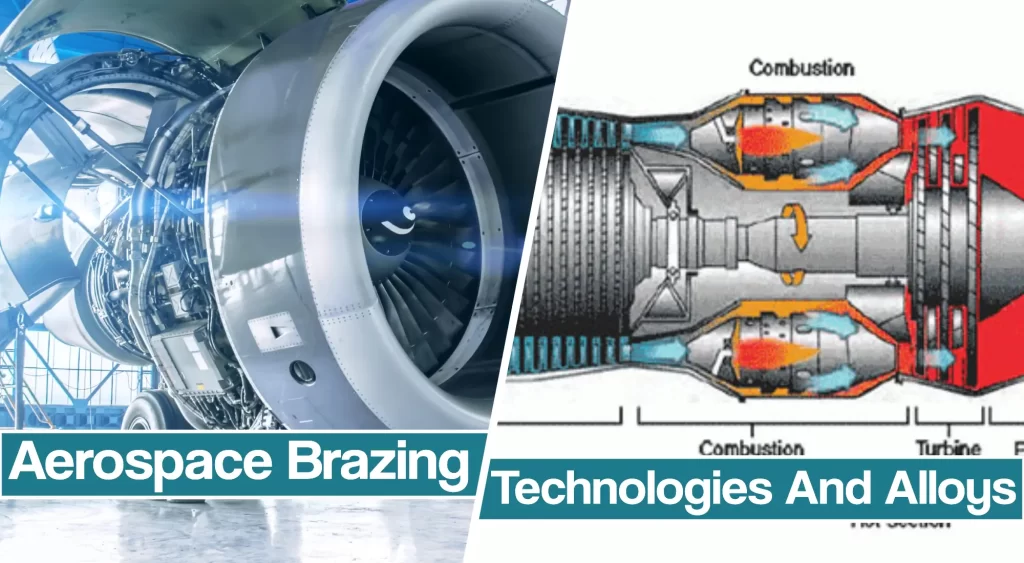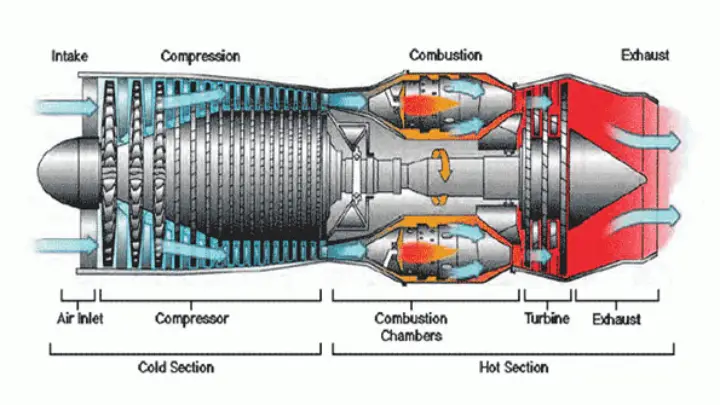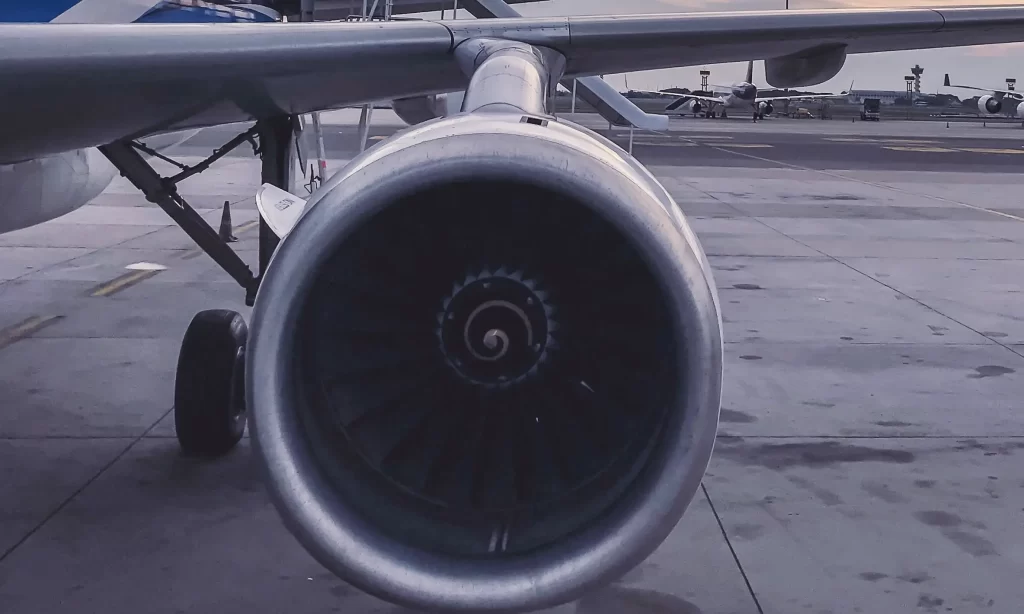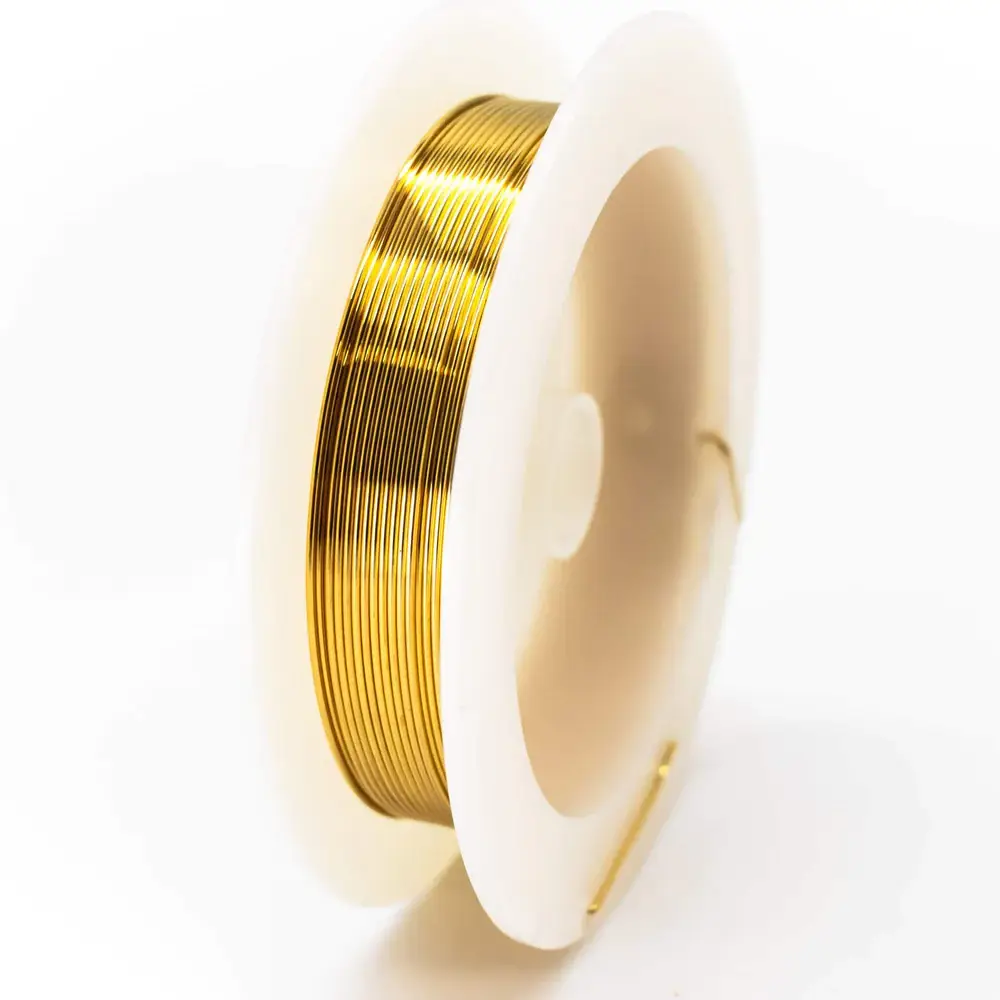Numerous new brazing alloys are changing the landscape of what’s possible when it comes to thermal barriers in jet-engine hot sections.
Nickel, gold, platinum, and their alloys are used in jet engine turbines because they can endure the conditions in both cold and hot turbine sections.

Material scientists and ceramics component manufacturers have been developing new materials and processes that let engines run increasingly hotter, in response to the aerospace industry’s focus on developing products that achieve higher performance and cost less in aerospace brazing.
How Jet Engine Works and Conditions Inside It

A large amount of air from the compressor is used to cool the turbine vane and blades of the jet engine. Turbine temperature and the materials that need to be cooled determine the required amount of air.
The turbine can only take in so much air, so if the turbine materials would need less cooling or can be made from materials that can endure higher temperatures, more air would be available for propulsion. Thus, increasing the turbine’s temperature capability is critical to improving engine efficiency. However, engines become increasingly hotter as the processing temperature is increased, and this increased heat degrades metals.
Pre-sintered preforms (PSPs) are employed to repair vanes that succumb and break down due to extreme heat and wear. PSPs, with a small amount of brazing alloy mixed with the parent metal, are used primarily in the turbine section to repair vane cracks and wear areas.
Technologies and materials are continuously developed to improve the engine parts’ endurance in high-temperature conditions in these jet engine zones. The struggle to reduce the cost of repair and maintenance continually moves the goal posts as technology advances, and the temperatures are higher in the engines.
A lot has happened in this space already thanks to the ongoing developments. For example, the development of advanced braze alloys, the use of ceramics on high-temperature metal to ceramic components, and the introduction of active brazing, which allows the metal to be bonded directly to ceramic without metallization.
Which Braze Alloys Are Used For High-Temperature Applications
Advance military aircraft and commercial airspace engine parts are developed so that they can directly bond ceramic to metal and other nonmetallic materials.
Alloy compositions are designed for practical use in very high-temperature applications (750-850°C).
To select an alloy, it’s necessary first to determine if the alloy meets the specific service temperature conditions and the joining components’ requirements.

For example, it’s necessary to use alloys like silicon nitride ceramic which are brazed onto new super alloy engine parts in new turbine hot sections.
Turbofan engines are often used in modern airliners because they produce exceptionally high thrust and exhibit good fuel efficiency. These turbofan engines obtain thrust from the core and from the fan while the engine inlet captures the incoming air from its surroundings.
Some of this incoming air goes through the fan and continues into the core compressor and then the burner. This is where the air is mixed with fuel, and as a result, combustion occurs, which provides the necessary energy to move the plane.
The hot exhaust passes through the core and fan turbines and then out the nozzle. The rest of the incoming air passes through the fan and bypasses the engine, similar to air through a propeller. The air that goes through the fan has a slightly increased velocity.
Some Real-World Alloy Examples Are
Take Nioro brazing alloy for example. Nioro is applied on Inconel X750 and 718 to meet the anneal temperature and solve the issue of excess grain growth occurring with nickel-based alloys.
Nioro is a high-purity gold/nickel alloy for vacuum brazing.
Such nickel-based braze alloys are used in compressor and turbine section brazing. In its foil form, it can be used for brazing honeycomb and metal seal strips.
There are more than 15 other braze alloys used for jet engine compressors.
Many of these alloys are produced by Morgan Technical Ceramics’ Wesgo Metals in Hayward, California.

The Metallurgy Behind Alloy Selection For Jet-Engine Parts
Every alloy is applied for a specific reason when designing, maintaining, and repairing jet engine parts. These alloys exhibit certain mechanical properties that meet the jet engine operation requirements and can withstand the operating conditions.
For example, gold-nickel and platinum-gold-nickel are applied as a brazing solution to the fuel system of tubes and nozzles. These alloys are ductile enough to survive the expansion after the fuel nozzle, located where combustion takes place, undergoes a severe heat build-up. So, other alloys are not considered because they are cost-efficient and meet the mechanical properties needed for the application.
Additionally, gold and platinum braze alloys offer exceptional corrosion resistance. Plus, gold and platinum offer easy-to-see contrast when observed using X-ray. So, the inspection process is simplified.
Active Metal Brazing
Another interesting aspect to consider when looking at jet engine brazing is the active metal brazing, which allows metal bonding directly to ceramic without prior metallization. This eliminates numerous steps in the process.
Some materials and components cannot be joined with any method other than active brazing. This holds especially true in aerospace and military applications requiring absolute precision and efficiency.
However, active metal brazing is not only more efficient but also produces robust, hermetic seals that can withstand higher working temperatures. This brazing process is employed when brazing nozzles for aerospace and industrial turbine engines, engine sensor components, and new turbine vane systems.
Any combination of carbon, graphite, metals, diamond, and ceramics is supported with active metal brazing.
Conclusion
Aerospace brazing technologies continue to evolve as new brazing methods and materials are discovered. There is always a way to make a jet engine more efficient, and brazing plays one of the key roles in maintenance, design, and ultimately repair.
After the engine experiences wear through use, it must be brought to the same functioning state as it was when it was brand new. There cannot be any risk associated with jet engine repairs. So, new brazing solutions are always on the rise to improve the life and efficiency of aerospace parts.





